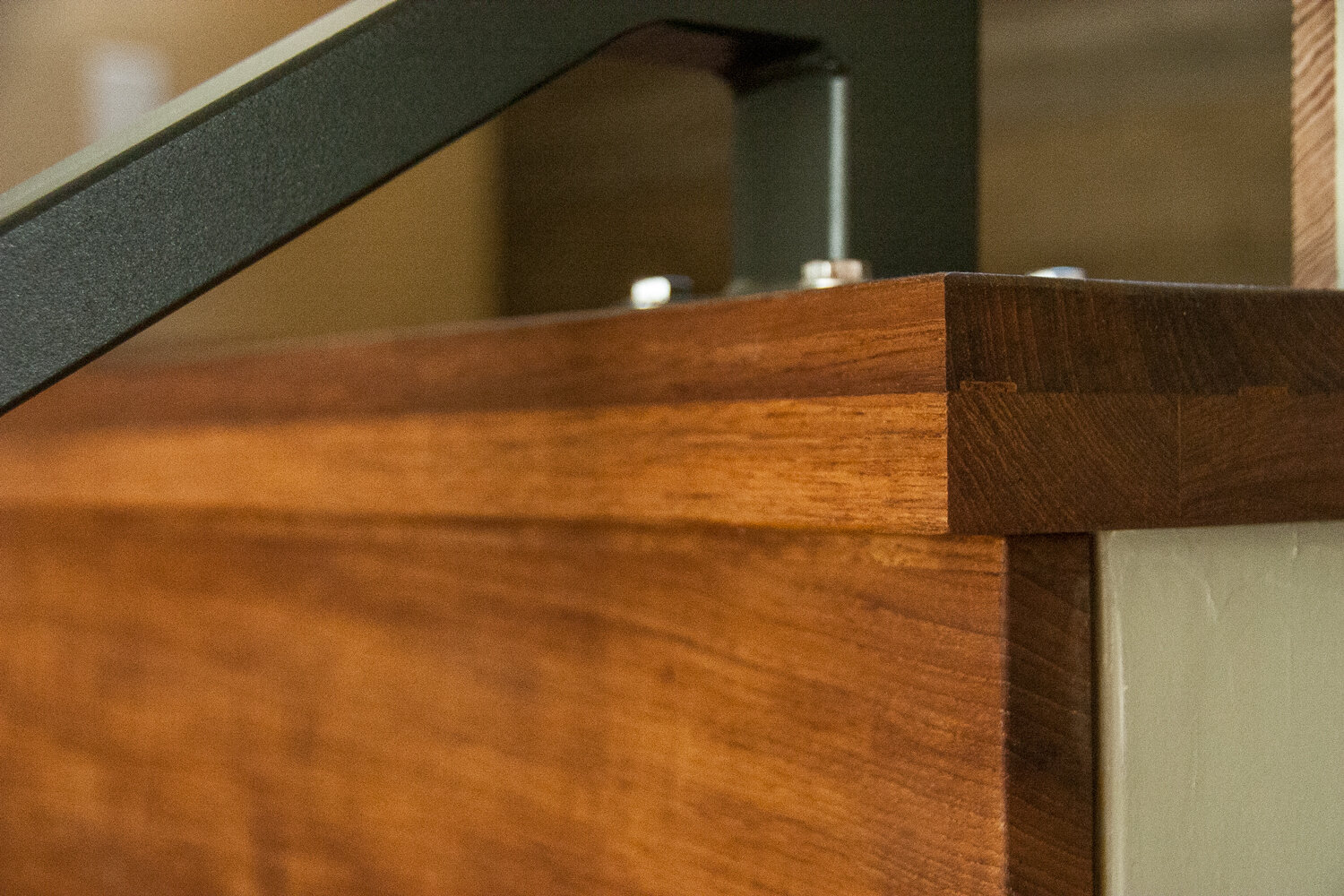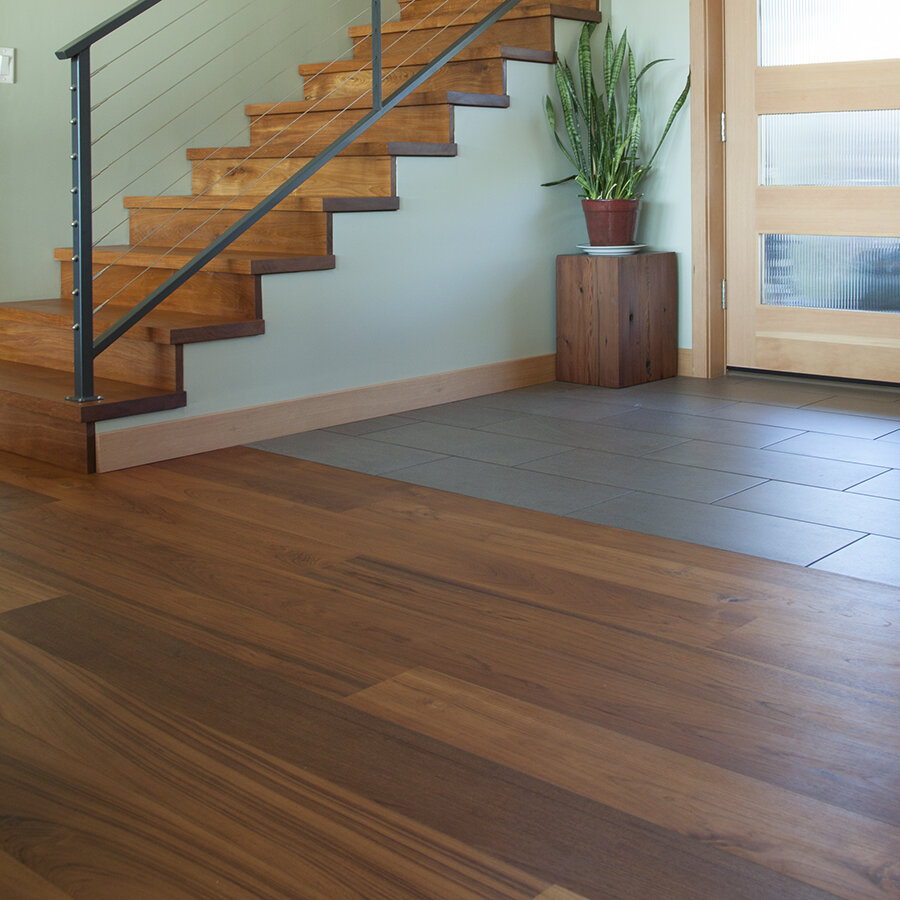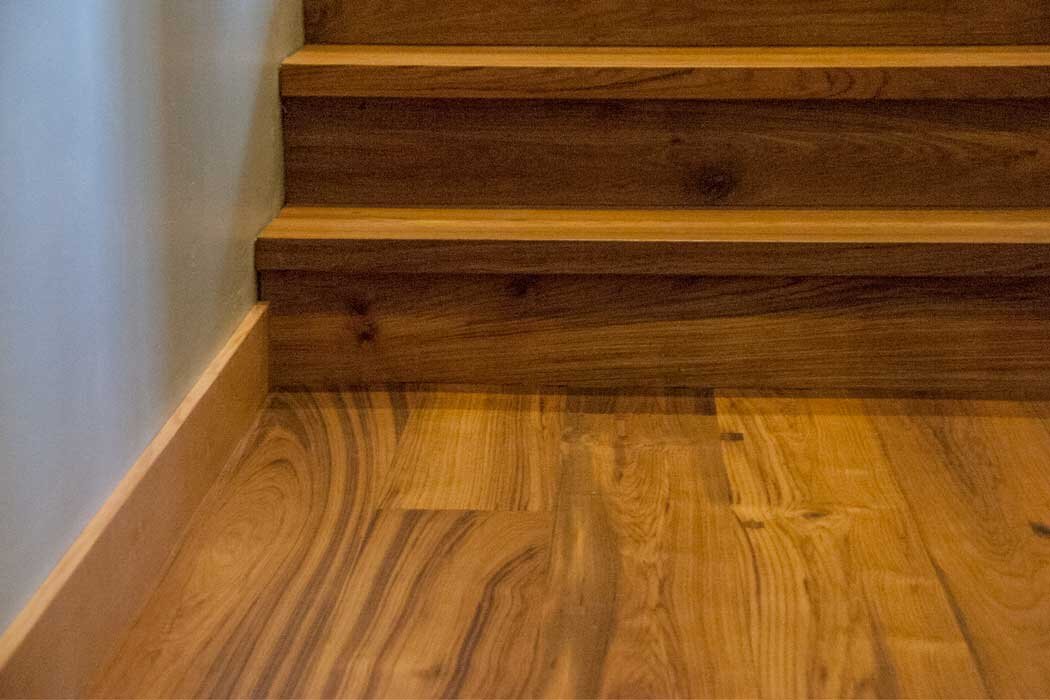Staircase Nosing Options: which is right for your project?
Types of Wood Staircase Nosing Options for your Design Project
Reclaimed Sakhay Teak staircase and square style staircase nosing in Ashland Residence
Different types of staircase nosing options. Image from Lapeyre Stair
Square nosing option with reclaimed Sakhay Teak wood in Ashland Residence
Square nosing option with reclaimed Sakhay Teak wood in Ashland Residence
Commercial Staircase featuring Left Coast White Oak
Commercial Staircase featuring Left Coast White Oak
No overhang concrete stairs at Craneshed Commons in Bend, OR with Sakhay Teak wall paneling
Finding the Right Staircase Nosing for Your Interior
Staircase nosing is both an aesthetic and safety consideration when designing a space with stairs, and there are many options to choose from. Each offers a distinct style that can enhance the overall design of your home or interior design. Staircase nosing refers to the very edge of the stair tread where we usually put our feet as we walk up and downs stairs.
Besides offering a bit of extra space for walking on each tread, carefully chosen staircase nosing can also help protect the overall wear and tear of the tread. A proper nosing may also help improve the visibility of each tread, increasing overall safety when using the stairs.
Types of Staircase Nosing Options
Staircase nosing comes in a variety of shapes and sizes to choose from, which can enhance any particular style for your overall aesthetic. These are some of the most common shapes you will come across:
Pencil Round: Like the name suggests, the edges of this nosing resemble the side view of a pencil, with a rounded corners and no sharp edges. The face of the nosing is flat, and can work with both traditional and modern styles. These are a safer option for spaces with children, as the edges are not sharp.
Square: Though overall square in shape, this nosing does have very slightly rounded edges, which protects against any visual damage that may affect the nosing. This option can bring attention to the staircase with a dramatic effect.
Half-Round: Also known as “bull-nose,” half-round stair tread nosing includes a smooth, curved design at the stair edge with a flat surface in between. This style is often used for the “landing,” which refers to an additional extension of the bottom stair.
Full-Round: As the name suggests, the full-round nosing is a smooth, rounded curve that extends all the way around the edge of the stair nosing. This creates an elegant look, but is not as slip-safe as the other nosing options. Oftentimes, this shape is only used on the landing.
No Overhang: This refers to staircase nosing that sits flush with the riser with no overhanging pieces. This creates an illusion that the stair is one continuous shape, and makes for a modern, sleek look.
Considerations for Wood Staircases
Wood makes for a stunning staircase option, and adds warmth and character to your home or commercial design project. Wood is one of the safest options for staircases, as it is softer than metal, tile, concrete or glass. Wood is very durable, and can last for decades when properly maintained and refinished.
It is important to consider which type of wood you will be using for your stairs, especially if the application if indoors or outdoors, as some wood is preferred for exterior use. It is also important to consider the use of the stairs, and the level of foot traffic. Harder wood species, like white oak and teak, can handle higher traffic environments in comparison to softer wood flooring options, like pine and fir.
Commercial Stair Applications
For larger commercial staircase projects, using wood is a beautiful and viable option. We can provide wooden safety strips that comply with the International Building Code Guidelines, to ensure that the stairs are safe and durable for high traffic environments.
Talk to any of our wood experts to learn which wood is right for your staircase application. We are happy to help!







